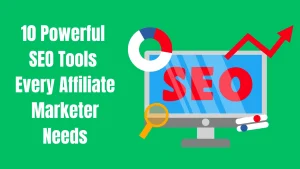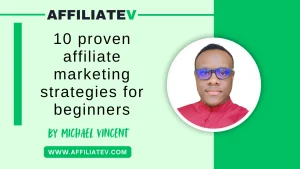Affiliate Marketing by Email: Why Your Campaigns Aren’t Converting (And How to Fix It Fast)
Struggling with low conversions? Learn why your affiliate marketing by email isn’t working and what steps you can take today to turn your list into real sales.
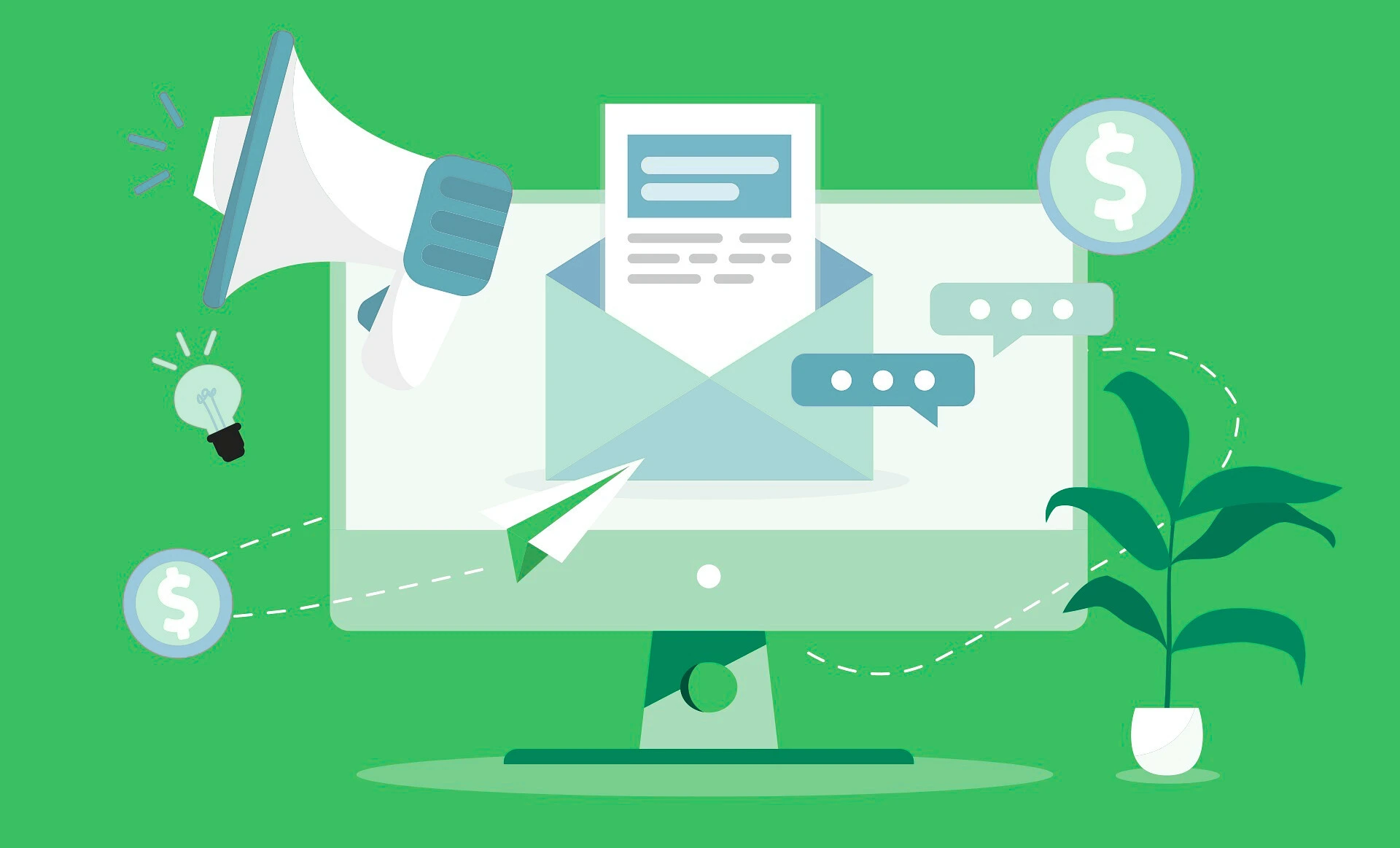
You’ve built your email list. You’re running campaigns. Maybe you’re even using a solid autoresponder. But the numbers don’t lie—open rates are low, clicks barely trickle in, and commissions feel like a lucky win when they happen.
I’ve seen this happen not just with beginners but with experienced affiliate marketers too. A few years ago, I had a list of over 1,000 subscribers. I thought I was set. But I sent out campaign after campaign and barely saw any movement. My subject lines were okay. My links were in there. But the results didn’t match the effort.
And that’s when I came to realize that just sending emails isn’t enough. It’s not about having a list. It’s about how you talk to that list. That was the shift that changed everything for me.
If your affiliate marketing by email isn’t converting, there’s a reason. And no, it’s not just the offer or the platform.
In this post, I’ll show you the key mistakes holding your emails back and what you can do right now to fix them. You don’t need to start over. You just need to adjust how you approach your list—and once you do, the results will follow.
Key Takeaways:
- Affiliate marketing by email fails when it feels like a cold sales blast. Warm your list with real value before pitching anything.
- A poor-quality list kills conversions. Grow your list with intent and always match offers to what your audience actually wants.
- Bad timing is just as harmful as bad copy. Use welcome sequences, lead nurturing, and follow-ups to stay consistent.
- Don’t just write emails—build a funnel. Segment your list, map out your offers, and guide readers step by step.
- Your subject line does the heavy lifting. Test it. Make it human, clear, and curiosity-driven.
- Automation makes you money while you sleep. Set up triggers based on clicks, behavior, and timing to stay relevant.
- Real trust beats flashy tactics. Share your own stories, offer real help, and focus on connection.
- Tools like GetResponse simplify the hard stuff. But the strategy behind your emails is what truly moves the needle.
- Fix one thing at a time. Better list, better copy, or smarter sequences—start small and build momentum.
Why Affiliate Marketing by Email Often Fails
Let’s get something straight—affiliate marketing by email isn’t broken. But how most people use it is.
Many affiliate marketers treat their email list like a megaphone. Blast out an offer. Hope for clicks. Wait for commissions. But if your list isn’t built the right way or your message misses the mark, results will always fall flat.
The problem usually starts way before you hit “send.”
1. You’re Sending the Wrong Message to the Wrong List
List quality matters more than list size. I learned this the hard way. Back when I was testing new affiliate funnels, I thought more emails meant more money. So I grabbed every lead I could get—random opt-ins from giveaways, social traffic with no clear intent, even a few cold sources.
The result? A bloated list with no pulse.
Sending affiliate offers to people who didn’t even remember signing up was a waste. They didn’t know me. They didn’t care about the products. And every email felt like spam to them.
That’s the difference between buying a list and building one. A high-intent list—people who opted in for something related to what you promote—is way more valuable than a big, random one.
Also, look at what you’re promoting. If someone joined your list for a free tool on content marketing, and now you’re pitching crypto offers, they’ll tune out fast. It’s not just about having an audience. It’s about having the right message for the right people.
Your email list should be a reflection of what you stand for and what value you bring. If there’s a disconnect, your conversions will stay low no matter how polished your emails look.
2. No Real Connection With Your Audience
Most affiliate emails sound like they came from a template—and that’s the problem.
People can tell when you’re just trying to sell them something. If every email feels cold, generic, or straight-up robotic, they’ll stop opening. Or worse, they’ll unsubscribe.
I’ve made this mistake plenty of times. Early on, I used to copy what other marketers were doing. I thought sounding “professional” meant using formal language, bullet points, and some urgency triggers. But I ended up sounding like every other marketer in their inbox.
What actually worked? Talking like a real person. I started using my own voice. I shared quick stories. I told people why I liked a product, how it helped me, and why I thought they’d care. Nothing fancy. Just honest and direct.
That shift changed everything. Replies went up. Clicks improved. And most importantly, people started trusting what I sent them.
If your affiliate marketing by email feels disconnected, check your tone. Ditch the corporate language. Add a bit of personality. Use simple stories and hooks. You’re not just selling—you’re building trust, one email at a time.
3. Bad Timing and Frequency
Email isn’t just about what you say—it’s about when you say it and how often. And this is where a lot of affiliate marketers mess up.
Some send emails every single day, pushing offer after offer. Others go quiet for weeks, then suddenly show up with a hard sell. Both are bad. Over-sending burns your list out. Going silent makes people forget who you are. Either way, your emails start getting ignored or marked as spam.
Another mistake I made early on was skipping the welcome sequence. People would sign up, and I’d drop them straight into promo emails. No intro. No context. Just links. That’s like walking up to someone you just met and asking for money. It doesn’t work.
You need to warm people up. A simple 3–5 email sequence can build trust fast. Share a bit about who you are, why you do what you do, and give them something useful up front—before you ever pitch a product.
Also, lead nurturing matters. If you don’t guide your subscribers with useful content or tips between promotions, you’ll lose their interest. They didn’t join just to be sold to. They want value. If they’re not getting that, they’ll stop opening.
So take a look at your timing. Set up a proper welcome flow. Space out your promos with helpful content. It’s not about sending more—it’s about sending smarter.
4. Zero Strategy Behind the Email Funnel
Affiliate marketing by email needs more than just a series of offers. Without a clear plan, you’re just throwing links at people and hoping something sticks.
One of the biggest issues I see is no segmentation. Everyone on the list gets the same email, no matter what they signed up for or how they’ve interacted with past content. That’s a fast way to lose attention. If someone clicks on a blog about SEO tools, they shouldn’t be getting emails about fitness supplements. Relevance matters.
Another problem is skipping value-first emails. Some marketers jump straight to affiliate links without offering anything useful first.
That’s lazy. And your audience knows it.
You need to give before you ask—whether it’s a tip, a story, a quick win, or even a personal insight. Those small moments of value make people trust you more.
Then there’s the call-to-action—or lack of one. I’ve seen emails that ramble on, but when it’s time to click, there’s no clear next step. Your CTA should be obvious, easy to follow, and lead directly to the offer without distractions.
A good email funnel leads people from interest to trust to action. If there’s no structure—no segmentation, no value, no clear path—your campaigns won’t convert. You’re not just sending emails. You’re guiding decisions. And that takes strategy.
How to Fix Your Affiliate Email Campaigns Fast
Now that you know what’s holding your emails back, let’s fix it. You don’t need to rebuild everything from scratch. But you do need to get more intentional with how you run your campaigns. That means cleaning up the mess, setting up the right structure, and sending emails people actually want to open.
These steps aren’t theory. They’re what I use in my own funnels when things stall—and they work.
1. Clean Up and Segment Your List
Start with your list. If you’ve been sending the same message to everyone, that’s a big reason your results are flat.
First, tag subscribers based on behavior. Who’s clicking? Who bought something? Who hasn’t opened an email in months? Tools like GetResponse or ConvertKit make this easy. I tag buyers so I can upsell later. I tag silent ones so I can re-engage or remove them.
Next, segment by interest and funnel stage. If someone joined through a blog about email tools, send them email marketing content—not random side offers. If they’re brand new, don’t hit them with a hard sell. Start with value and build trust.
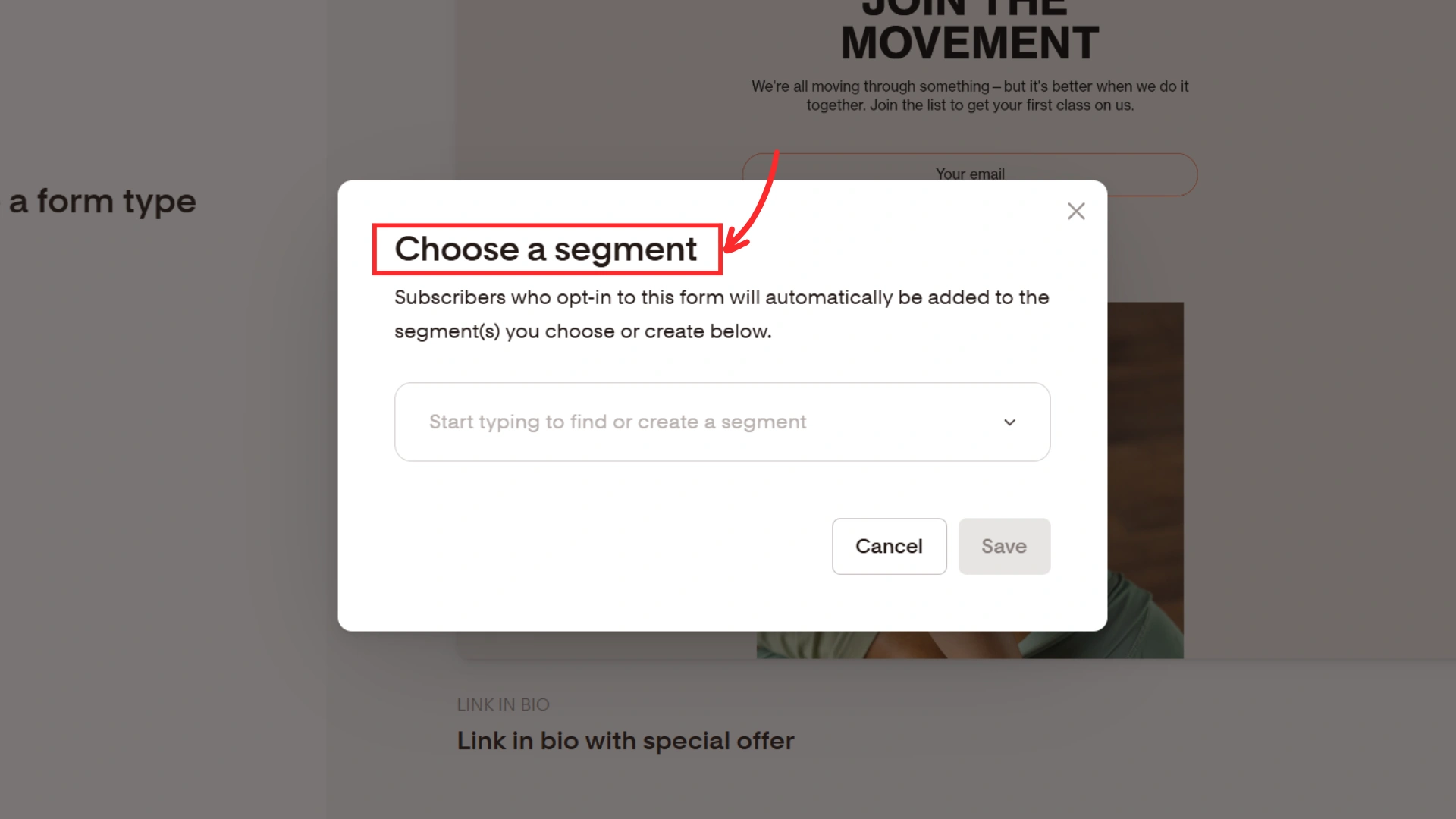
Below is a quick illustration of email segmentation.
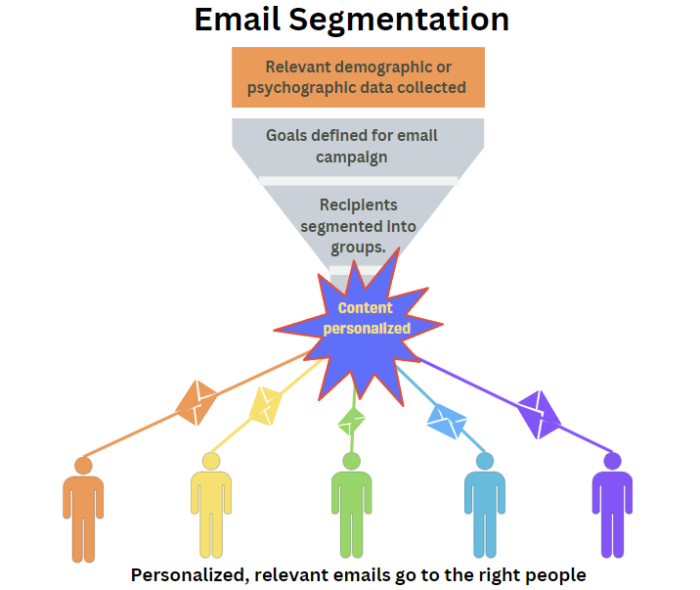
Your list isn’t one-size-fits-all. When you treat it like it is, you lose money. Segmenting doesn’t have to be complex. Just start with behaviors and interests—and build from there. Your emails will instantly feel more relevant. And your conversions will reflect that.
2. Warm Up with a Value-First Sequence
Before you send that first affiliate link, slow down. If someone just joined your list, they don’t know you yet. Dropping a promo right away is the fastest way to lose them.
Instead, warm them up with a short value-first sequence. I usually start with 3 to 5 emails. No pitches. Just value.
You can share a quick story about how you got started. Or give away a tool or resource that helped you. Teach them something simple that gets them a small win. I like sharing personal lessons that tie into what I’ll promote later—so when the pitch comes, it makes sense.
This isn’t about fluff. It’s about trust. People buy from people they like and believe. And that belief is built email by email. If you build goodwill before asking for anything, your offers won’t feel forced—they’ll feel like a natural next step.
Keep the tone real. Make it personal. Show up with something useful. Do that for a few days, and your pitch won’t feel like a pitch. It’ll feel like a recommendation. That’s the difference.
3. Improve Your Email Copy and Hooks
Your email copy might be killing your results before anyone even clicks.
Start with your subject lines. If they don’t spark curiosity or speak directly to a problem, they’re getting skipped. I used to write safe, boring subject lines like “Quick update” or “New offer inside.” Open rates tanked. Once I started testing punchier hooks—questions, cliffhangers, or real pain points—my opens shot up.
Keep the tone human. Write like you talk. If your email sounds like a marketing brochure, you’ve already lost. People respond to clear, natural writing that feels like it came from a friend—not a brand.
Also, stop writing flat intros. The first few lines should pull people in. Use a story, a strong opinion, or a simple cliffhanger that makes them want to read more. Something like “I almost deleted this tool—then it made me $500” works better than “Let’s talk about email tools.”
Don’t forget your call to action. One clear link is better than three scattered ones. Tell people exactly what to do and why it matters.
Good email copy isn’t about fancy words. It’s about clarity, curiosity, and making the reader feel something. That’s what gets clicks.
4. Use Smart Automation and Triggers
If you’re sending the same emails to everyone at the same time, you’re missing easy wins. Automation isn’t just about saving time—it’s about sending the right email at the right moment.
Start with the basics like abandon cart emails. If someone clicks your affiliate link but doesn’t buy, follow up. Remind them. Add a short benefit. Maybe even answer a common objection. I’ve recovered commissions just by doing this with simple one-line nudges.
Then build click follow-up sequences. If someone clicks a link in your email, that tells you what they’re interested in. Don’t waste that. Tag them, and drop them into a short sequence with more info, tips, and a stronger call to action related to that product.
You can also set up personalized flows based on what people signed up for or what they’ve engaged with. For example, if a subscriber came in through an email marketing guide, trigger a flow that recommends email tools—not something unrelated.
The goal is to match your message to their behavior. Automation helps you do that without having to babysit every campaign. Done right, it runs in the background while your list warms up, clicks increase, and commissions keep coming in.
Real Examples of What Works
Let’s stop talking theory and look at something real.
Here’s a simple email funnel I used for an affiliate promo around an email marketing tool. It wasn’t flashy. No long sales pages. Just clear emails, real value, and solid timing. And it converted.
Offer: Affiliate promo for an email tool I actually use
Goal: Get clicks to a free trial offer
Funnel Length: 5 emails over 7 days
Result: 38.6% open rate, 12.4% click rate, 11 trial signups (from 212 subscribers)
Email 1 – Subject: “This tool saved me hours every week”
Tone: Personal story
Hook: Shared how I used to spend too much time writing and scheduling emails
No link. Just story. Built connection.
Email 2 – Subject: “Free tool I wish I used earlier”
Tone: Friendly, value-first
Included a free resource inside the tool (no hard sell)
Soft CTA: “Check it out here if you’re curious”
Email 3 – Subject: “Here’s how I actually use it (screenshot inside)”
Tone: Transparent
Gave a look inside my setup
CTA: Clear link to the free trial
Click rate jumped to 17% here
Email 4 – Subject: “What if you never write another email from scratch again?”
Tone: Curiosity-driven
Focused on pain point
Added a real testimonial + link again
Email 5 – Subject: “Last chance to get this free bonus”
Tone: Urgency (but still casual)
Bonus: I offered my swipe file for free if they signed up
Final push with a direct CTA
What made it work:
- Warm-up before pitching
- Simple stories and personal touches
- One clear CTA per email
- Used tagging to follow up only with clickers later
This isn’t a giant funnel. No fancy tools beyond basic automations. But it worked because the emails felt real and the offer was a natural fit.
Tools That Make It Easier
You don’t need to do all this manually. Good email tools can save you hours and help you run smarter campaigns that actually convert.
GetResponse is my go-to. It’s built with affiliate marketers in mind. You get list segmentation, autoresponders, A/B testing, landing pages, and prebuilt automation templates. I’ve used it for years because it’s easy to set up and doesn’t punish affiliates like some platforms do.
Other solid options:
ConvertKit – Great for creators. Clean interface. Good automation builder.
MailerLite – Simple and affordable. Good for smaller lists.
ActiveCampaign – Powerful if you need deeper automation and CRM features.
Read Also: 12 Best Free Email Marketing Tools You Need For Your Affiliate Business
What to watch out for:
Some tools (like Mailchimp or Klaviyo) don’t allow affiliate links in emails. Always check the terms before you start sending.
The right tool doesn’t make up for bad emails—but it does make good strategy easier to execute. Start simple, then build out as your list grows.
Quick Fix Checklist to Improve Your Email Campaigns
I’ve put together some quick checklists to help you spot what’s holding your email promos back—and fix it without overthinking things.
Start here before you write your next email.
Use this as a starting point. Fix one section at a time. The results stack up fast when your emails stop feeling like ads and start feeling like value.
Conclusion
If your emails aren’t converting, it’s not just bad luck. Most likely, it’s bad timing, weak targeting, or no real connection.
Start by cleaning your list. Then speak like a human—not a sales page. Add value before asking for a click. And make sure every email has a purpose.
The one thing I’ve learned that changed everything? Don’t rush the pitch. People need a reason to care before they buy.
Frequently Asked Questions
What is affiliate marketing by email and how does it work?
Affiliate marketing by email is when you promote affiliate products directly through your email list. You send emails with valuable content, and inside those emails, you include links to products or services. If someone clicks your link and makes a purchase, you earn a commission. It works best when your list is warm—meaning people trust you and are used to hearing from you. Email gives you control over the message, timing, and tone, unlike social platforms. You don’t need a huge list. What matters is relevance and consistency.
Why aren’t my email campaigns converting?
If affiliate marketing by email isn’t converting, it’s likely due to poor list quality, bad timing, or emails that feel like hard sells. Many marketers either blast offers too soon or ghost their list for weeks, killing trust. If your emails don’t connect, or if you send the wrong offer to the wrong people, clicks and sales drop fast. A good email campaign needs a warm-up sequence, clear value, strong subject lines, and one focused CTA. Strategy matters more than list size.
How often should I email my list?
There’s no perfect number. What matters is consistency. Don’t ghost your list for weeks, and don’t spam them daily with pitches. A steady flow of helpful, value-first emails followed by relevant offers tends to work best. A welcome sequence, weekly value drops, and soft pitch timing build trust over time.
Which email tools are best for affiliates?
Email tools like GetResponse, ConvertKit, and MailerLite help run affiliate marketing by email the right way. They let you segment your list, set up autoresponders, run A/B tests, and automate follow-ups. GetResponse is affiliate-friendly and offers solid templates and automation features. ConvertKit is great for creators with multiple offers. Always check the platform’s affiliate policy—some tools block affiliate links. The right tool should support tagging, behavior tracking, and simple funnel setup to make your campaigns faster and more personal.
Do I need a big email list to make money with affiliate links?
No. What matters more is quality and trust. A small list of people who open, click, and care about what you send can outperform a large, cold list. Focus on growing with intent—through lead magnets, targeted traffic, and value-first content. Then send offers that make sense for that audience.





